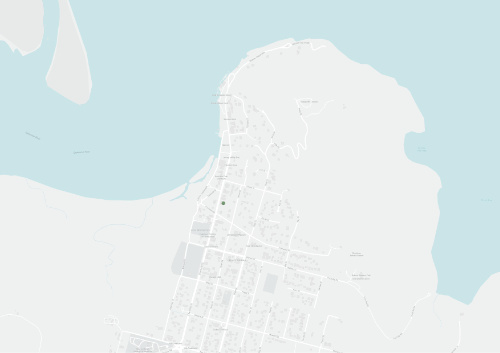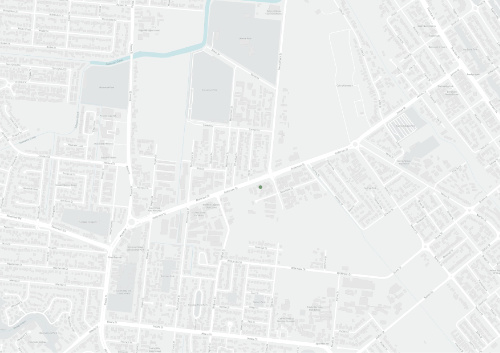Recovery plans set out the research and management actions necessary to stop the decline of, and support the recovery of, listed threatened species or threatened ecological communities. The aim of a recovery plan is to maximise the long term survival in the wild of a threatened species or ecological community.
Biodiversity and Country
Related Content
An occasional newsletter about the Golden-Shouldered Parrot produced by Stephen Garnett and Gabriel Crowley.
LandsCAPE is a magazine about the environment and sustainable living, published by Cape York Natural Resource Management. It is free to read online or download as a PDF.
Case Study of Fire Management and related costs for Elsey Station (1999).
Project Number: CY PA 13 - Crab Island
Project Name: Crab Island Flatback Turtles
Organisation: Cape York Peninsula Development Association
Project status: Funded by NHT
Amount provided: $13,800
Date started: April 2008 Date completed: December 2008
MATs from Cape York Peninsula NRM Plan: CB3.2; RA2.1; RA2.3; CB3.3; CB1.4
Summary
Seagrasses are marine flowering plants that have adapted to growing in muddy, near-shore environments. They form meadows wherever the ocean is shallow enough to allow the sunlight to reach the sea floor. Seagrass meadows are found in river estuaries, along the coast and, if the water is clear enough, way out to sea in waters up to 60 m deep. Recent mapping of the seagrass distribution along the eastern half of the Northern Territory coastline found over 70,000 hectares of intertidal and shallow sub-tidal seagrass beds.
Effect of different fire regimes on vegetation thickening in grasslands on Cape York Peninsula
Crowley G.M. (2001) "Grasslands of Cape York Peninsula - a fire-dependent habitat", in Savanna Burning—Understanding and Using Fire in Northern Australia , (eds) R. Dyer, P. Jacklyn, I. Partridge, J. Russell-Smith and R. Williams, Tropical Savannas CRC, Darwin, p.34.
Western Cape York turtle nesting season is underway again. Turtles nest all year round on Cape York, but peak nesting time on the western Cape is from July to October each year.
This corresponds with the time of the year that the beaches are most accessible, and visitation to these remote beaches continues to increase.
Words and photo Robyn May
Rubber vine has been treated in the Laura region by Cape York Weeds and Feral Animals (CYWAFA) Inc. with support from Cape York NRM.
Cape York NRM Gully and Grazing Project Officer Michael Goddard said the project was all about restoring native ground cover and reducing erosion.
‘The Laura River Rubber Vine Control Project is reducing the amount of rubber vine growing along the waterways, allowing the return of native grasses and minimising soil loss during rain events,’ he explained.
With the support of Cape York NRM, the Western Cape Turtle Threat Abatement Alliance, a collective of five western Cape Indigenous Ranger groups, spent the 2019 nesting season (June – September) monitoring seven beaches, managing feral pig numbers and installing turtle nest cages to protect eggs and hatchlings.
WCTTAA’s end of season meeting for 2019 was held in Cairns in December with special guest Threatened Species Commissioner Dr Sally Box in attendance.
Story Peta-Marie Standley
Fire management training opportunities for land managers on the Cape have increased
As late season fires continued to burn across Cape York, many land managers undertaking best practice savanna burning fire management implemented their early season burns prior to 1 August 2018.
However, sometimes these early burns were not enough to prevent large areas of the landscape from burning in the late dry season.
Producers on the Cape are developing peer relationships as they work together to cultivate advanced farming methods.
Greater engagement amongst the producers on Cape York has been facilitated by Cape York NRM’s Regional Extension Officer, Oliver McConnachie, under the Queensland Government’s Enhanced Extension Coordination in Reef Catchments project.
‘The guiding principle of the project is that practice change is not to do with land—it’s to do with people. By focusing on the people, positive change in land management is being achieved,’ Oliver said.
Words and photo Kerri Woodcock, Western Cape Turtle Threat Abatement Alliance (WCTTAA) Coordinator
A remote sand cay off the north east coast of Cape York, Milman Island became a centre of activity during the annual turtle census in summer 2018/2019. Led by the Queensland Department of Environment and Science, turtle monitoring on Milman Island has been a regular event on the turtle calendar since 1991 when it was first established as a representative monitoring beach for northern Queensland hawksbill turtles (Eretmochelys imbricata).
Words Juliana Foxlee | Photos Barry Lyon
As the focus on Australia’s extinction crisis heats up, Cape York Natural Resource Management and Northern Gulf Resource Management Group are working to protect the habitat of one of Cape York’s rarest birds – the golden-shouldered parrot.
Cape York NRM’s Healthy Farming Futures project is working closely with Cape York’s pastoralists to help their businesses become more sustainable.
Co-led by Cape York NRM’s Regional Agriculture Land Facilitator Andrew Hartwig, the project sees graziers in western flowing catchments in Central Cape York increase the amount of ground cover on their properties to help reduce erosion, sediment run-off and improve water quality in the Gulf.
It also provides a pathway towards business sustainability.
Words and photos Juliana Foxlee
Springvale Station Nature Refuge is located 40km south west of Cooktown. Once a cattle station, the culturally – important property is now a refuge for a diverse range of vulnerable flora and fauna.
The Palaszczuk government purchased Springvale Station in 2016 in a bid to reduce sediment flowing from the degraded paddocks into the Normanby River.
The Queensland government is now investing in a new project which will support water quality outcomes and *Bama livelihoods.
Words Juliana Foxlee | Photo James Donaldson
Cape York NRM are partnering with Northern Gulf Resource Management Group (Northern Gulf RMG) to facilitate opportunities for Aboriginal people to showcase and share their cultural fire knowledge and establish a network of Aboriginal fire practitioners.
The North Queensland Threatened Species Symposium will be held on 16-17 February 2021 at the Cairns Colonial Club.
The objective of the Symposium is to increase knowledge exchange and collaboration between organisations and individuals working to conserve threatened species and ecological communities in Northern Queensland.
The symposium will include presentations from the Threatened Species Recovery Hub researchers, and will include workshops focussing on threatening processes that impact the threatened species in our region.
Cape York NRM’s Healthy Farming Futures project is supporting a Cape York Wildlife Sanctuary which has so far received over 2,500 mm of rain this wet season, to stabilise the landscape to protect critical habitat.
Words and photo Robyn May
‘Manage landscape and all species benefit’ was just one of the many positive comments made during the feedback session following the 2019 Cape York Indigenous Fire Workshop.
This year’s workshop was held in July at Mary Valley and coincided with the school holidays, so lots
of kids were able to attend and learn an array of traditional fire and land management techniques while spending time on Country. This is critical as these children are the land and sea managers of the future.
Words Jessie Price-Decle and Juliana Foxlee | Photo Jessie Price-Decle
The three-year project saw graziers make changes to their land and grazing practices to improve land condition and water quality outcomes.
The project team, made up of Cape York NRM, South Cape York Catchments, and Department of Agriculture and Fisheries staff, worked across 20 properties over the life of the project.
South Cape York Catchments Grazing Project Officer Jessie Price-Decle said the project made a difference to water quality and land condition.
Words Juliana Foxlee | Photo James Donaldson
Cape York NRM is partnering with Northern Gulf Resource Management Group to facilitate opportunities for Australian Indigenous people to showcase and share their cultural fire knowledge, establish a network of Indigenous fire practitioners and protect the habitat of threatened species.
In May, Northern Gulf RMG coordinated an on- country fire workshop at Talaroo Station in the northern Gulf area. The three - day event was hosted by the Ewamian Aboriginal Corporation.
2019–2020 has been a big year for the Biodiversity and Fire Program. After a number of staff changes, the team now consists of Biodiversity and Fire Program Manager Kerri Woodcock who is based in Cairns, and Biodiversity Officer Dr Helen Penrose, and Community Engagement Officer Joey Dix who are both based in Cooktown.
Words Juliana Foxlee | Photo provided
A Cape York NRM project is asking farmers what changes should be made on their properties to support them and their businesses, and funding a number of their suggestions.
Regional Extension Coordinator Oliver McConnachie explains:
‘I’m running a project to help farmers and land managers learn from each other through regular get-togethers, meetings and workshops.
In Episode 1 of My Cape York Life, we talk with Shelley Lyon - a ranger at Steve Irwin Wildlife Reserve - on the banks of the Wenlock River.
Shelley has spent over 40 years on Cape York working and living in some of Australia's most beautiful and remote places. In this episode we learn how Shelley and her family came to live on the Cape, and hear some funny and scary tales of her adventures over the years.
Marie Shipton lives in Wujal Wujal and is a Traditional Owner from the area. The interview is recorded on Country at the mouth of the beautiful Bloomfield River, in the company of a patrolling crocodile.
Marie talks about growing up on the river, before being moved to Wujal Wujal by the Lutheran Church, and shares stories about her family, culture and life in the place where the rainforest meets the reef.
These days Marie works to preserve and share the stories and culture of her Country, as a Cultural Officer at Wujal Wujal Aboriginal Council.
This environmental management plan was released by the North Queensland Bulk Ports Corporation as part of their environmental program with the objective of acting as a reference document for all then-current and potential users of the Weipa port.

